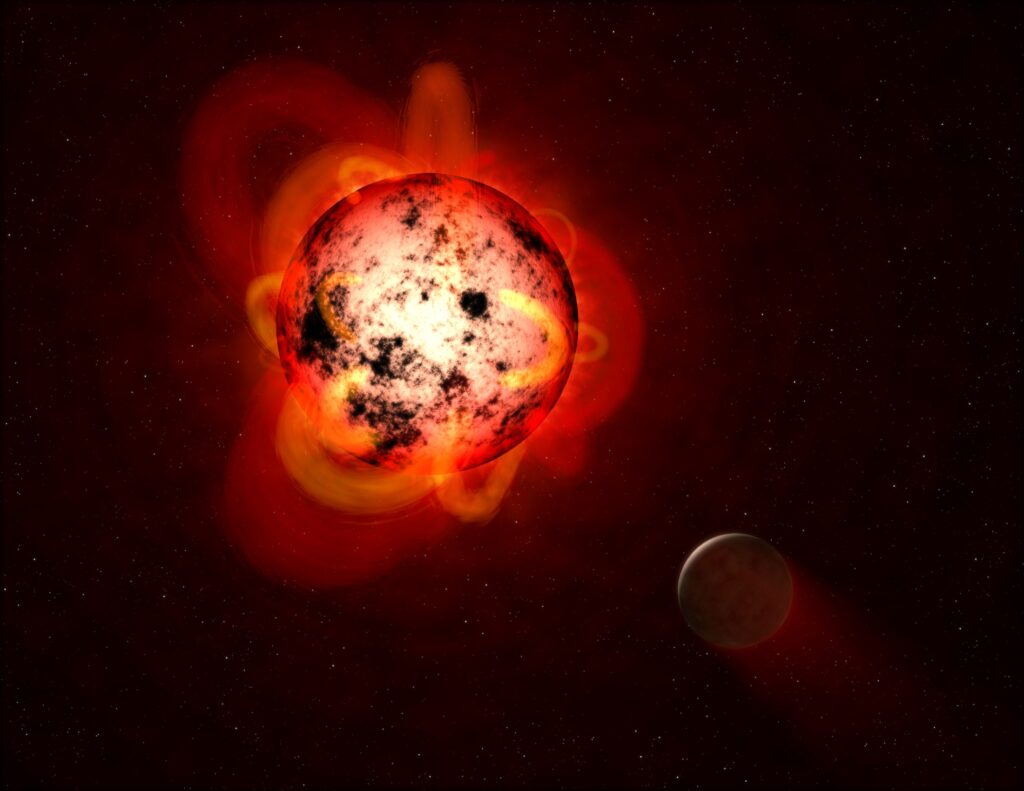A team of American astronomers has announced the discovery of two previously unknown rocky exoplanets. They orbit the red dwarf HD 260655, which is close to the Solar System.

HD 260655 is located 32 light years from Earth. Its mass and radius are about 56% smaller than the sun’s, and its age is estimated in the range from 2 to 8 billion years.
During a series of observations, the TESS space telescope was able to record regular changes in the brightness of HD 260655 caused by the transits of two exoplanets, designated HD 260655 b and HD 260655 c. Subsequently, astronomers were able to confirm the existence of these bodies thanks to data from the HIRES and CARMENES instruments, which recorded changes in the radial velocity of the star.
The radius of HD 260655 b is 1.24, and the mass is 2.14 times the mass of the Earth. This gives an average density of 6.2 g/cm3. The exoplanet makes one revolution around the parent star in 2.77 days. HD 260655 c is larger than its neighbor. Its radius exceeds the radius of the Earth by 1.53 times, its mass is 3.09 times, and the average density is 4.7 g/cm3. One year on HD 260655 c lasts 5.7 days.
Due to their proximity to the sun, both exoplanets are unlikely to be a favorable place for the search for life. According to the researchers’ calculations, the equilibrium temperature of HD 260655 b is 436 °C, HD 260655 c is 284 °C.
Earlier, we wrote about how the TESS telescope detected over 30 exocomet close to the star.
According to https://phys.org
Follow us on Twitter to get the most interesting space news in time
https://twitter.com/ust_magazine

